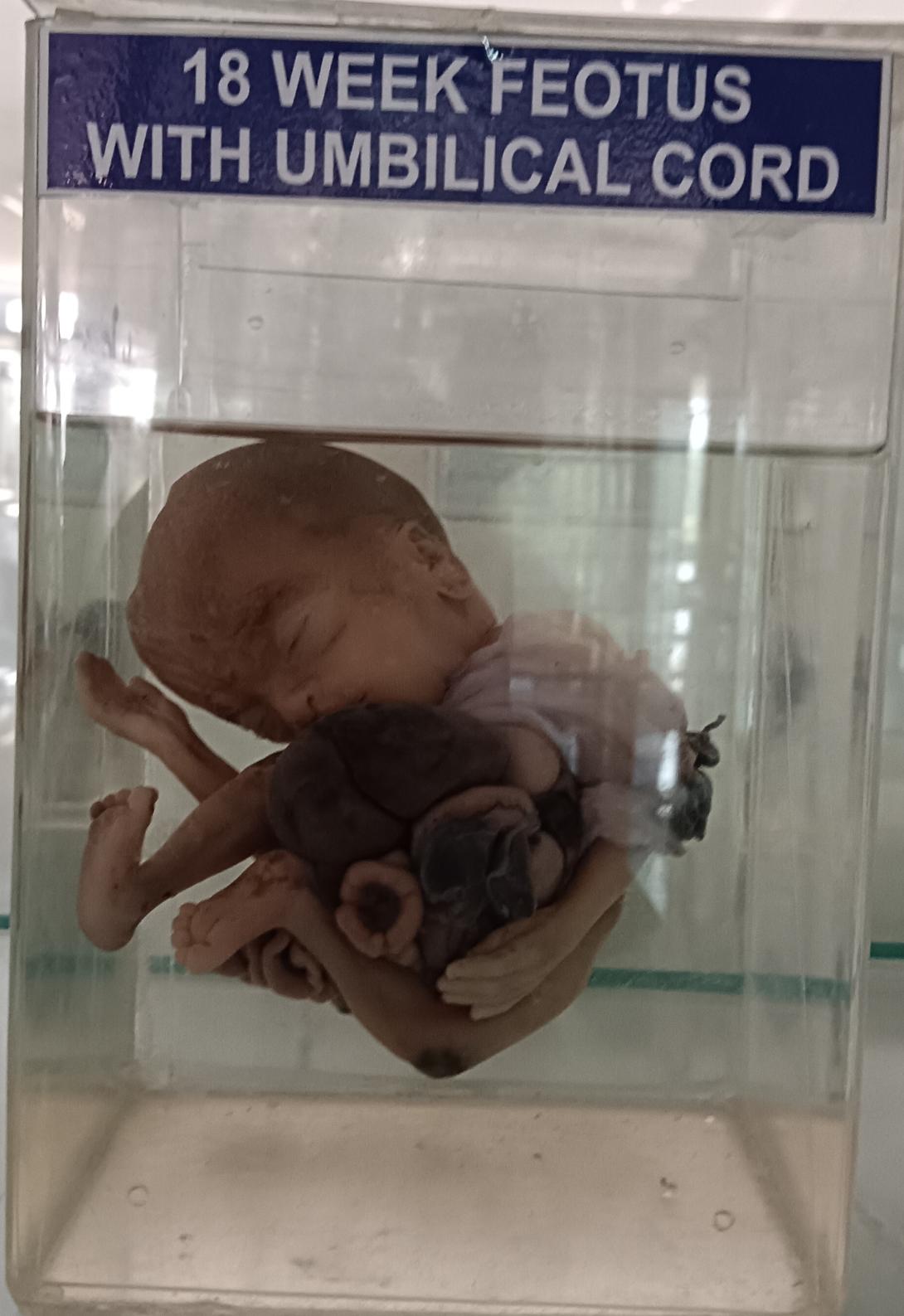Omphalocele is a rare congenital abdominal wall defect with a reported prevalence of 3.38 per 10,000 pregnancies. It is a protrusion of the abdominal contents covered with peritoneum through the base of the umbilical cord. Omphalocele can be isolated but is more frequently associated with other congenital anomalies and syndromes such as Beckwith-Wiedemann syndrome and trisomies 13, 18, and 21. The survival rate is close to 80%, and it is directly related to the severity of the associated anomalies, as infants with isolated omphalocele have a higher survival rate (90%).
Pathophysiology:
Disturbance of organogenesis during the embryonic period results in omphalocele. Around the sixth week of development, the abdominal contents become too large to be contained in the abdominal cavity and protrude at the base of the umbilical cord. This event is known as physiologic midgut herniation and is easily identified on prenatal ultrasound between the 9 and 11 weeks of gestation. The liver is never present in the physiologic midgut herniation. By 12 weeks of gestation, the hernia reduces, and when it persists, it is no longer physiological. Omphalocele occurs when the gut contents fail to rotate and return to the abdominal cavity. It can occasionally contain the liver in the presence of a large abdominal wall defect.
Diagnosis:
The diagnosis of omphalocele postnatally is evident on physical examination upon the identification of an anterior midline abdominal mass at the site of the umbilical cord insertion covered by a membrane. The omphalocele can be small with only a few loops of intestines protruding through the defect, large containing several abdominal organs, or giant when the defect is greater than or equal to 5 centimeters with the liver partly protruding. Restrictive lung disease is common in these infants, and thus it is vital to stage the repair.
Differential Diagnosis:
Gastroschisis is the main differential diagnosis of omphalocele. In gastroschisis, the intestinal protrusion is usually to the right of the midline, and there is no involvement of the umbilical cord. The membranous sac is a major distinguishing feature of the two conditions as gastroschisis is characterized by free-floating bowel loops, but in the case of a giant omphalocele, the membrane can occasionally rupture in-utero.
Other differential diagnoses include hernias of the umbilical cord with covered abdominal wall defects less than 2 cm, body stalk anomaly characterized by an umbilical cord absent or severely shortened associated with scoliosis.

